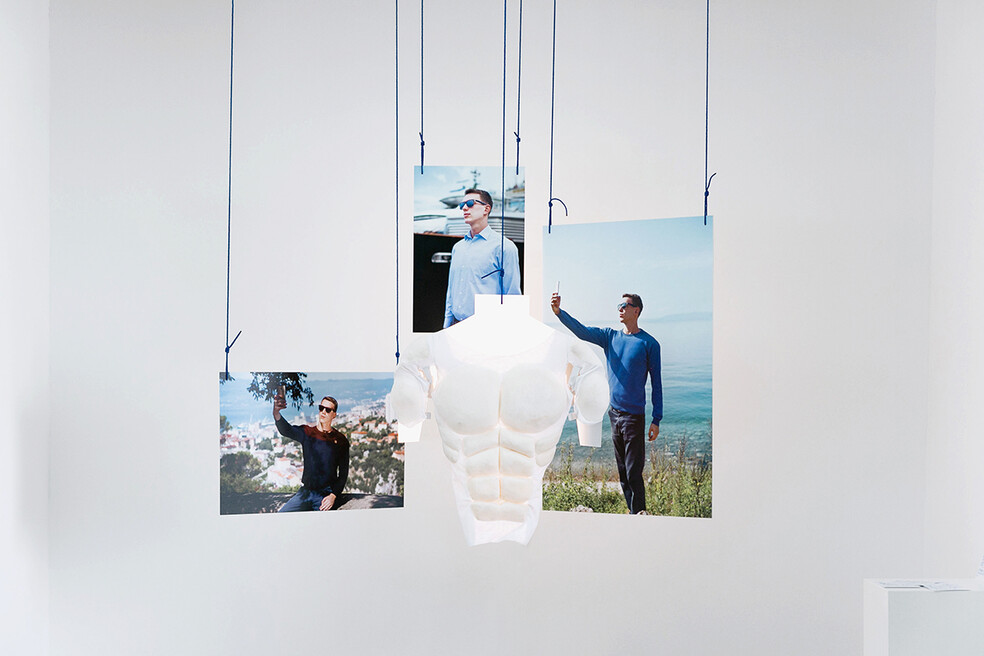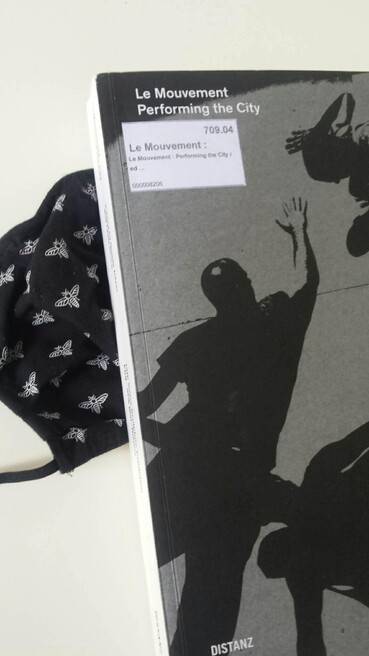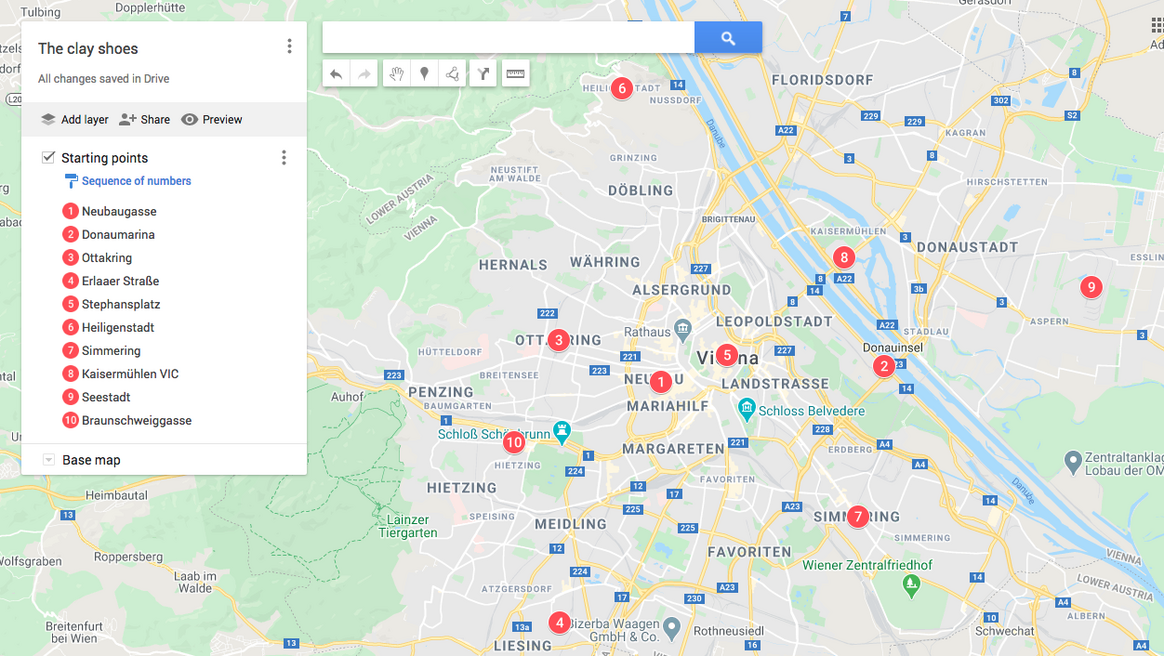Petra Mrša
Bereich: Medienkunst
Key Facts
Nationalität
KroatienBereich
MedienkunstWohnort
RijekaEmpfehlende Institution
tranzit.org/ERSTE StiftungZeitraum
Juli 2020 - August 2020Born 1985 in Croatia. Graduated Photography at the Academy of Dramatic Art, Sociology at the Faculty of Humanities and Social Sciences and Psychology at Croatian studies. She had 10 solo and 30 group exhibitions. Her work is part of the collection of the Museum of Arts and Crafts in Zagreb, Zagreb City Museum, Rigo Galery and presented by the contemporary Croatian photography platform. She is working as an assistant at the Photography department at the Academy of Applied Art at Rijeka University and was taking a part in a postgraduate international art program run by curatorial collective What, How & for Whom/WHW in Zagreb.
Selection of solo exhibitions
2019 Killing, arranging, walking, Gallery Flora, Dubrovnik, HR
2019 Killing, arranging, walking, Gallery Spot, Zagreb, HR
2017 Changing conditions, changing minds, Expanded Media Gallery, Zagreb, HR
2017 Rehearsing family, Gradska galerija Labin, Labin, HR
2015 Rehearsing family, Art Workshop Lazareti, HR
2015 Rehearsing family, MKC Split, Split
2015 Rehearsing family, Mali salon, Museum of modern and contemporary art, Rijeka, HR
2014 Rehearsing family, Gallery Kranjčar, Zagreb, HR
2015 What do you see when you close your eyes?, Photo Gallery Lang, HR
2014 Balkans brides project, Petra Mrša, OKO i Martina Miholić, Hoxton Gallery, London, UK
2013 Controlled displacement- photographic experiments, Gallery Kortil, Rijeka, HR
2013 New school, Savignano Immagini festival, Savignano sul Rubicone, IT
2012 New school, Gallery VN, Zagreb
2012 Visual identities, Centralna postaja, Maribor, SI
2012 (Ir)replaceable, Gallery Waldinger, Osijek
2012 (Ir)replaceable, Gallery KIC, Zagreb
Selection of group exhibitions
2019 Women, (Be)coming, UGM Studio, Maribor, SI
2019 Open Nova, Galerija Nova, Zagreb, HR
2019 AIR, Krinzinger Projekte, Vienna, AT
2019 Midterm, Galerija Nova, Zagreb, HR
2018 Traces of Water, Galerija Prsten, Zagreb, HR
2018 Museum Kunst+Wissen, Museum Kunst+Wissen, Diessenhofen, CH
2017 Last one out turn off the lights, Galerie L’inlassable, Paris, FR
2017 Fine del nuovo: Compra, vendi, compra, vendi…,Villa Di Toppo Florio, Udine, IT
2016 Meer teilen: share more, Shedhalle in Eisenwerk, Frauenfeld, CH
2016 VIG SPECIAL INVITATION, Ringturm, Vienna, AT
2016 There is something about my family, FOTODOK, Utrecht, NL
2016 Different Worlds:Young Contemporary Photography, Foton- Center for Contemporary Photography, Ljubljana, SI
2015 Grad na drugi pogled, Museum of modern and contemporary art, Rijeka, HR
2014 24. Slavonski bijenale, Museum of visual arts, Osijek, HR
2014 IS_land 2, Gallery Forum, Zagreb, Gliptoteka HAZU, Zagreb, MMC Luka, Pula, POGON Jedinstvo, Zagreb, HR
2014 Otočka karta 2, Zavičajni muzej, Zlarin
2013 ESSL Art award, Museum of contemporary art, Zagreb, HR
2012 Un anno di portfolio, Centro Italiano della Fotografia d’Autore di Bibbiena (CIFA), IT
2012 Ispit, Gallery SC, Zagreb
2012 Fotografija industrije, Zagreb city museum, Zagreb, HR
2012 A personal gaze in a mutual splace, Savignano Immagini fest, Monte della Pieta, Savignano sul Rubicone, IT
2011 Kvartovska slika, Zagreb city museum, Zagreb, HR
2010 Rovinj Photodays – Finalisti, Museum of arts and crafts, Zagreb, HR
Publications
2019 DIS / Inheritance New Croatian Photography, Ikon Arts Foundation, New York, USA
2015 Rehearsing family, Museum of modern and contemporary art Rijeka, HR
2013 New school, Pazzini editore, Villa Verucchio, IT
The methodology I regularly use in my works that are dealing with deconstructing of what is regarded as common knowledge, involves exploration through delving into unknown situations with a group of people. In this way, temporary group members are generators of shared experience. What is important is that all of the group members find this provoked, constructed, and experimental situation meaningful. The principles of egalitarian politics are being practiced to oppose privileged, homogenized productions of contemporary art.
I will use my time in Vienna to explore the works that I see as predecessors of such approach - the artistic practices of Central, Eastern and Southeastern European from the period of the second half of the 20th century onwards, but also to explore contemporary content production that lean on the legacy of anti-fascist values, such as the choir HOR '29 Novembar'.
Being introduced to Kontakt collection at the WHW Akademija made me wish to know more about the works and knowledge that they look after, which is Eastern, Southeastern, and Central European art since the late 1950s. Ambiguous position of being a Croatian artist coming to Vienna to get closer to the works from her own geography was additionally layered by the very moment of arrival - just after the security measures of the lockdown were withdrawn. Having the possibility to walk around the public space freely, to witness faces of the strangers and the unknown axis of the city, felt like an exclusive activity whose legal and feasible status is endangered by pandemic, ecological crises, and gentrification. Being further intrigued by the term "kontakt", and its multiple intertwining with the Collection, I decided to execute walks in random, central, and remote public spaces without controlling to what or to whom to be exposed. The imprint of these actions is captured in the clay I am walking on/in. Once it gets its shape, it testifies our time in which random wandering through public spaces is endangered but yet still possible. It also emphasizes the contact with the ground of the city and with people that share that ground. The clay is being attached to the feet by the blue hygiene overshoe which, in parallel to its functionality and reference, renders my appearance as irregular and deficient.
The work Clay shoes deals with the public space as a place of meeting the uncontrolled and walking as a means of learning. By walking in self-made improvised clay shoes, the action is not shown through photographic representation, but through imprinting the experience into the clay material.
The second work, The landscape, portrays our usual habitat - the city - through a photographic series of quotidian objects found on the street. By taking and relocating them under the spotlight, the work redirects the view to what is common and basic, but yet broken and neglected. Upon my return to Croatia, The Landscape was presented as an installation in a public space as part of the program Ganz nove perforacije, Noć perforacija, curated by Karla Pudar, Silvija Stipanov, and Zvonimir Dobrović. The work Clay shoes will be represented in the project Symptoms of the future, curated by Irena Borić, Dušica Dražić and Mirjana Dragosavljević, planned for February 2021.



















